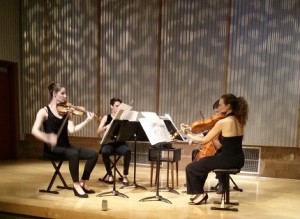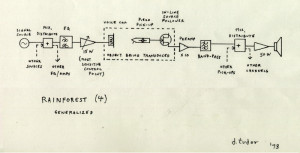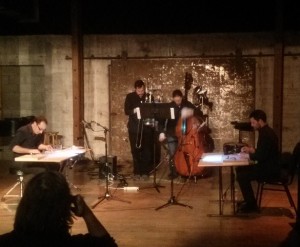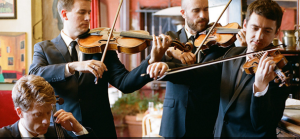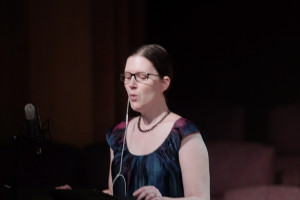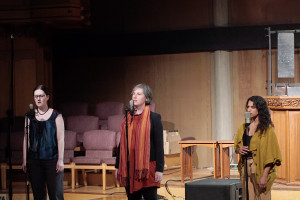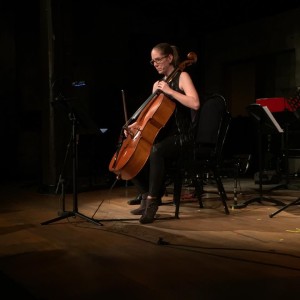 On Friday, May 27, 2016 WasteLAnd presented a concert titled subterranean tracings at Art Share LA in downtown Los Angeles. Five works were presented including new pieces by Michelle Lou and Nicholas Deyoe. An overflow crowd turned out on the start of a holiday weekend and packed the roomy Art Share performance space.
On Friday, May 27, 2016 WasteLAnd presented a concert titled subterranean tracings at Art Share LA in downtown Los Angeles. Five works were presented including new pieces by Michelle Lou and Nicholas Deyoe. An overflow crowd turned out on the start of a holiday weekend and packed the roomy Art Share performance space.
The first piece on the program was for Chris Marker by Brian Griffeath-Loeb and the impressive forces deployed on the stage consisted of bass clarinets, euphonium, tuba, cello and double bass. For all of their potential power, however, the sounds coming from the instruments were small and subtle – a soft tapping on the cello, a light flapping of the valves on the euphonium, the occasional pizzicato note. A low trill in the bass clarinet added some movement and the accumulated clicking and clattering began to form a sort of rhythmic percolation. A low, guttural sound in the euphonium was heard, followed by a single tutti chord and extended silence. The knocking sounds reappeared, accompanied by the sound of rushing air moving through one of the horns. The piece proceeded in this way – a soft clatter of various sounds, a loud tutti chord and then silence. Even in the absence of musical tones, the sparse percussive texture provided an engaging continuity. The overall effect was a something like hearing a car cooling down in the driveway after a long hot drive on the freeway. for Chris Marker is a quiet piece, inviting the listener into contemplation and reflection while immersed in a new sonic landscape.
Next was A way [tracing], by Jason Eckardt, for solo cello. Ashley Walters was the featured soloist and this began with a strong flurry of notes at a brisk tempo. More rapid passages followed producing an active, bouncy feel while other sections seemed almost angry with a variety of heated phrases and aggressive sounds. A way [tracing] is a complex and challenging work – for both listener and soloist. The swirling texture and often agitated phrasing was accurately and confidently played, a showcase for the virtuosity that Ms. Walters dependably brings to all her performances. Enthusiastic and sustained applause followed.
Michelle Lou, the WasteLAnd featured composer for this season, presented an untitled work that called for an imposing ensemble with no less than trombone, trumpet, horn, tuba, contrabass clarinet, bassoon and contrabassoon, english horn, flute, cello and double bass. With Nicholas Deyoe conducting, this began with a low, fluttering in the bassoons – a sound felt as much as heard. Countering this were creaking and groaning sounds from the cello and bass, adding a measure of tension, followed by a large tutti chord from the woodwinds that added to the ominous atmosphere. A watery sound from the trombone gave the piece a nautical flavor, like being on an old wooden sailing ship creaking along on a foggy, moonless night. More powerful chords came from the winds at regular intervals, each increasing in volume, as if approaching some unseen danger. Rapid calls by the trumpet and trombone added urgency to the sense of warning while the clicking sound of ratchets markedly increased the tension.
